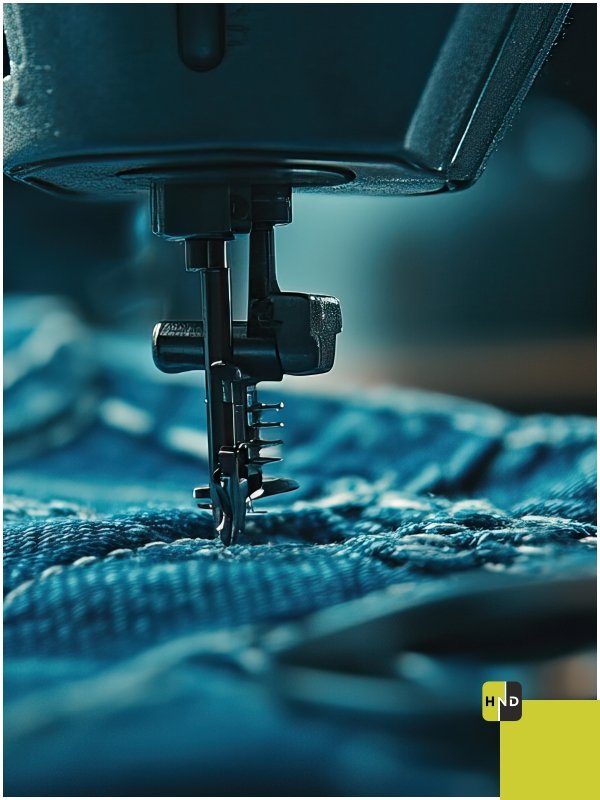Innovators in Style
Fashion history shows that textile design has always united artistic abilities with technological knowledge. The industry consistently adjusts its approaches to new materials and technical processes and evolving consumer taste preferences, starting from traditional handmade fabrics through contemporary digital printing. Textile design innovations transform both fashion patterns and individual wardrobe expressions in clothing. Trailblazers working in this field developed revolutionary breakthroughs that sustain their influence on the industry.
Discover how pioneers in textile design combine creativity and technology to define future trends in fashion through an exploration of their work.
Merging Tradition with Innovation
Modern textile production demonstrates the successful combination of old-fashioned craftsmanship alongside modern approaches. Present-day designers study past techniques to give them modern interpretations before combining them with current production approaches. Through modern technological tools, people preserve and elevate traditional expertise in hand-dyeing textiles and embroidery and weaving methods. Textile artistry gains new creative dimensions through old methods that preserve heritage traditions.
Sustainable Practices in Textile Design
Attracting growing interest in environmental awareness, textile designers develop new production processes aimed at producing fabrics that minimize waste production coupled with reduced pollution. The textile industry now focuses on materials made from organic sources, as well as products created from recycled elements combined with biodegradable colorants. Designers continue to explore two main directions in their work, which involve developing fabrics from plants and reusing leftover textiles to create new products. Through its reduction techniques, textile production benefits the environment in addition to providing consumers with sustainable fashion options.
The Role of Technology in Fabric Development
Modern textile design has received significant advancement from technological innovations. Designers utilize improvements in textile technology to explore new boundaries because of smart textiles and digital fabric printing along with 3D printing. The combination of technical fabrics that adapt automatically to temperature variations and moisture content, and light exposure allows the development of technologically advanced garments. Modern digital printing systems make it possible for designers to achieve higher levels of precision combined with efficiency while ensuring complete customization capabilities, which help them develop detailed patterns using waste-efficient methods.
Textile Design and Ethical Sourcing
The rise in ethical sourcing requirements has brought increased visibility to the textile supply chain operations. People in the market today demonstrate rising curiosity about the sources of their fabrics and their manufacturing processes. Designing textiles ethically requires practitioners to execute fair labor systems alongside responsible material selection and proper payment for all artisans. Transparency practices have motivated more fashion brands and designers to make ethical sourcing their priority, thus building responsible textile production standards.
The Influence of Cultural Heritage
Textile design receives its fundamental origins from cultural elements. Several designers merge their ancestral heritage by including native artistic elements like classic patterns along with fabric-making practices throughout their creations. Textiles function as storytelling vessels that support the conservation of regional crafts while showing the world distinctive textile heritage traditions. Designer celebrations of cultural heritage serve two goals: they maintain traditional values, and they develop meaningful creations that connect deeply with individuals.
The Power of Collaboration in Textile Innovation
Effective collaboration serves as the main creative force behind textile design development. A combined effort between designers along scientists and technologists produces innovative fabric development that enhances design while providing useful functions. The joint work between fashion designers and material engineers resulted in three essential advancements: waterproof yet breathable fabrics, self-cleaning materials, and temperature-regulating textiles. The future of fashion progresses toward new creative directions through successful design-and-function collaborations between different professionals.
Textile Design in High Fashion and Everyday Wear
The fashion world, together with casual wear, receives transformative effects from textile developments. Both haute couture together with everyday fashion benefit from different design elements since haute couture emphasizes the display of intricate fabric manipulations and embellishments and customized textiles, yet everyday fashion prioritizes functional innovations for comfort and durability. Textile developers continue to create new sportswear materials that wick moisture away from the skin and develop wrinkle-free office clothing that enhances daily clothing comfort. Style’s collaboration with functionality remains the leading force that drives the development of textile design.
The Future of Textile Design
Creative innovation combined with sustainability practices and technological innovation determine how textile design will progress into the future. The evolution of artistic designs and functional applications in the industry is expected from designers who explore new materials and processes. Considerations involving smart fabrics and green material choices have endless potential to advance the textile sector. Textile designers who accept these changes will guide fashion development through new textile interactions with consumers.
Summing Up
The fashion industry relies on textile design as its fundamental aspect because it determines what fashion styles grow popular while impacting how consumers interact with their apparel. Modern pioneers within this domain use technology to push artistic limits into uncharted territory. The fashion industry will progress through textile innovations that inspire both designers and consumers to keep fashion reflective of creativity and purpose.

